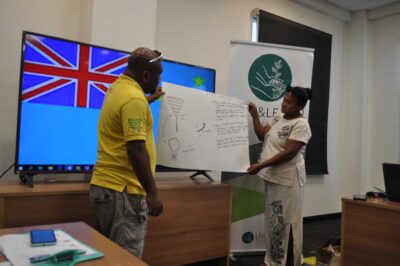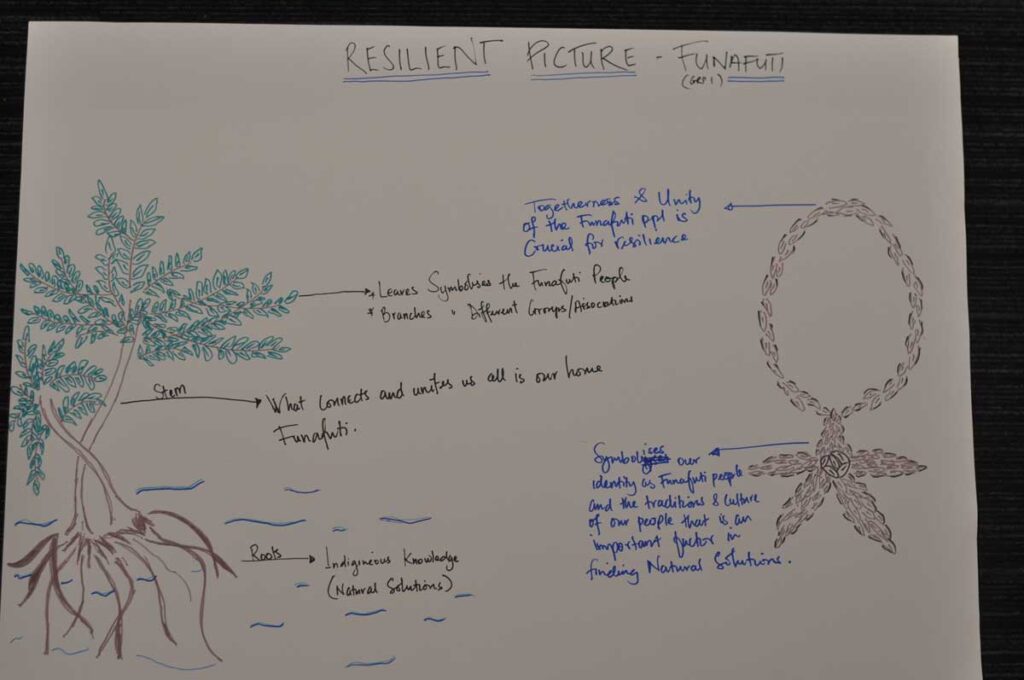What does resilience mean in the community of Funafuti on the main islet of Tuvalu? Community members were asked to discuss, describe and draw symbols of resilience that resonate with their community, as part of their creation of a Community Resilience Profile. The Funafuti workshop attendees approached this task with relish, dividing into groups and then coming up with numerous ideas. Their symbol choices are a reminder that various groups in the community see resilience differently, and that building resilience is a multifaceted endeavour.
The first group consisted of youth members, and they choose two items: the mangrove tree and the Funafuti star necklace. The roots of the mangrove represent traditional knowledge, which feeds the Nature-based Solutions they are pursuing for resilience. The leaves represent the people, and the branches the groups within the community – all of whom will grow stronger with the adoption of resilience-building pathways during the CRI programme. The young people of the community recognise the value of their elders’ wisdom, and that this knowledge is under threat, just as their ways of life are under threat from sea level rise.
The second symbol the young people chose was Funafuti’s famous star necklace. The round neck part represents the community groups connecting harmoniously, in order to protect the linked ecosystems of land, lagoon and ocean. The decorative star represents the community’s cultural heritage, which is, again, an important base for resilience. The materials of the necklace emphasise the community’s proximity to and reliance on the ocean.

The group of older women also chose the star necklace, along with their traditional fan, to symbolise the work of the women, and the culture that is important to them specifically. The men chose the fishhook as representative of their traditional livelihood of catching skipjack tuna. Tuna are caught for food, for livelihoods and also for cultural events that involved the whole community.
The importance of these areas was underscored when the community came to choose activities that will strengthen their resilience. The community plans to strengthen the marina and mangroves to enhance biodiversity in their fishing areas. They plan to combat overfishing by promoting traditional fishing methods and are exploring ways to strengthen fishing licenses.
A conservation area has been proposed to protect local plant species that not only contribute to food security but also provide the resources that are used in local women’s handicrafts. The revegetation of damaged coastline will also contribute to the protection of local species.

